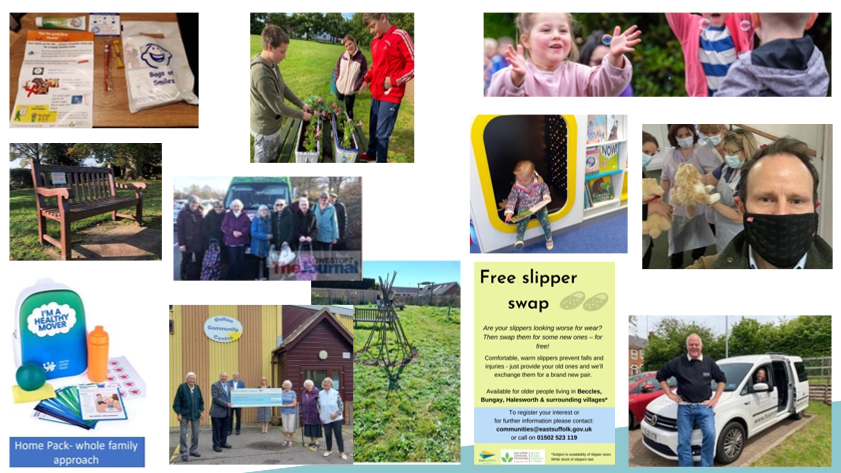East Suffolk Council: Effective Community Partnerships
What is the project?
When East Suffolk Council was first formed in 2019, it established eight community partnerships supervised by a Community Partnership Board. This assures that the new council remains connected with all its communities, as the district has the largest population in the country. Community Partnerships are an innovative, collaborative approach to working with key stakeholders and communities, to bring ideas to life and meet shared objectives. It was intended this would ensure the council retained its roots in individual communities, with the aim of understanding local assets and needs and taking a solution-focussed approach to problem solving.
Each of the eight partnerships were launched in late 2019. Workshops in each area focussed on data and insight about that area. A set of priorities were identified by participants including community groups, voluntary organisations, town and parish councils, businesses, and public services. The key priorities identified were social isolation and loneliness, transport and travel and mental health and wellbeing. Since its formation, almost £700,000 has been invested in the communities by the partnerships. A further £1.05 million has been invested through the Community Partnership Board.
The Community Partnerships provided a framework for the council’s response to the COVID-19 pandemic, particularly supporting the Clinically Extremely Vulnerable (CEV) cohort to access food, medicine and isolation support. They now provide the framework for the council’s ‘Ease the Squeeze’ programme of 12 projects. This was set up with funding from a range of sources including the Board, individual Community Partnerships and UK Shared Prosperity Fund, to help local residents to weather the rising cost of living – ranging from Warm Rooms to Community Pantries and Community Growing Schemes.
What benefits will it deliver?
Each partnership has a annual budget of £25,000 to allocate through a combination of outcome-based commissioning, small grant schemes and spend on district-wide projects. Beneficiaries include individuals and families in specific communities, local community groups, voluntary organisations, town, and parish councils.
The council’s investment levers in funding for its communities, for example, In 2021/22, for every pound invested by the council, £2.60 of match funding was attracted. Projects enabled include an electric demand responsive bus, oral hygiene packs, a healthy movers project, slipper swaps, robopets for people with dementia and veg box planting.






